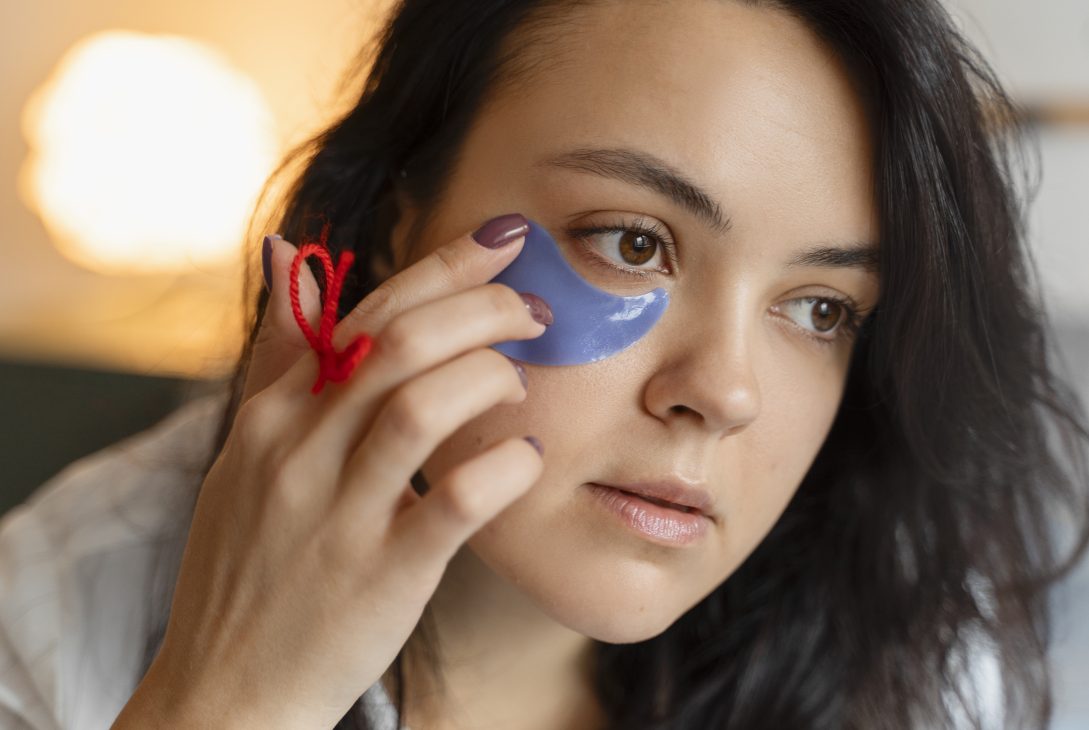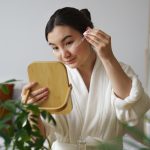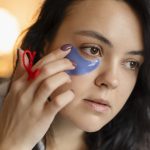At Circle Robe, we understand how persistent Dark Circles Under Eyes can affect confidence and overall appearance. These shadowy crescents under your eyes aren’t just a cosmetic concern they can signal fatigue, stress, or underlying health factors.
In this article, we explore what dark circles truly are, who’s most commonly affected, their root causes, and how you can both treat and prevent them. Practical home routines, medical solutions, and red‑flag signs are all covered—so you can take action with clarity and care.
Understanding Dark Circles
Dark circles appear as pigmentation or shadowing beneath the eyes, ranging from bluish‑purple to brownish hues. They often trace superficial blood vessels or deeper pigment deposits, creating a tired or aged appearance even in well‑rested individuals.
True dark circles differ from puffiness or hollows: pigmentation shows as discoloration, while hollows create depth. Here, we focus on discoloration and its causes, effects, and remedies.
Who Is Affected by Dark Circles?
Anyone can develop dark circles—from stressed students to aging professionals. They’re especially common in those with fair or thinning skin, genetic predisposition, allergies, or sleep disruptions. Lifestyle choices like late‑night screen time and dehydration amplify the issue. Both men and women experience them, regardless of skin tone, although they may appear more prominent in medium to deeper complexions.
Possible Causes of Under‑Eye Discoloration
Genetics and Skin Type
Inheritance plays a strong role. If family members have hereditary pigmentation or thin skin, it increases your risk.
Lack of Sleep and Stress
Inadequate rest and chronic stress make the skin look paler and blood vessels more visible, darkening the under‑eye area.
Allergies and Nasal Congestion
Allergies and blocked sinuses cause blood to stagnate under eyes, creating shadows and swelling.
Aging and Thinning Skin
As collagen declines with age, skin becomes thinner and loses volume—revealing underlying pigment and veins.
Sun Exposure and UV Damage
UV radiation stimulates melanin production, deepening pigmentation and darkening undereye circles over time.
Lifestyle Factors
Dehydration, poor diet, alcohol, and smoking all compromise skin health, intensifying under‑eye discoloration.
At‑Home Care and Treatment Options
You don’t always need a clinic to brighten tired eyes. Try these approachable methods:
Cool Compresses
A cold pack or chilled tea bags reduce swelling and constrict blood vessels, lightening shadows.
Hydrating Eye Creams
Creams with hyaluronic acid, niacinamide, peptides, or vitamin K support moisture and tone correction.
Adequate Sleep and Stress Management
Aim for quality rest while managing stress through meditation, exercise, or journaling.
Sun Protection
Wear SPF daily and use sunglasses to shield delicate under‑eye skin from UV damage.
Healthy Nutrition and Hydration
Eat antioxidant-rich fruits and vegetables. Drink plenty of water to improve circulation and skin resilience.
Professional Treatments to Consider
If at‑home efforts fall short, consult a dermatologist for tailored interventions:
Topical Prescription Creams
Retinoids and hydroquinone reduce pigmentation while encouraging skin renewal.
Chemical Peels
Mild peels help to eliminate pigmented cells and support under‑eye lightening.
Laser Therapy
Low-intensity lasers break up excess pigment and stimulate collagen production.
Filler Injections
Dermal fillers restore volume to under‑eye hollows, reducing shadows and enhancing brightness.
Prevention Strategies for Long‑Term Results
Preventive care is key. Here’s how to keep dark circles at bay:
- Stick to consistent sleep patterns.
- Protect delicate skin from sun exposure.
- Eat a balanced diet and stay adequately hydrated.
- Incorporate stress‑reducing habits daily.
- Monitor allergies and treat nasal congestion promptly.
When to See a Doctor
Consult a medical professional if dark circles appear suddenly, worsen quickly, or are accompanied by pain, swelling, vision issues, or skin changes. These symptoms might point to dermatological, systemic, or allergic conditions that require formal assessment.
FAQs
Will concealer fix dark circles permanently?
Makeup only provides temporary camouflage—it doesn’t address pigmentation or vascular causes.
Can lack of sleep worsen genetic dark circles?
Yes—sleep deprivation intensifies under‑eye color and amplifies visibility of inherited discoloration.
Are under‑eye patches helpful?
Cooling gel patches offer momentary relief and hydration but don’t permanently erase circles.
Do vitamin supplements help?
Supplements like vitamin C and K can support skin health, but aren’t a stand‑alone cure unless deficient.
Is dieting effective in reducing dark circles?
Healthy eating supports overall skin wellness, but targeted treatment is needed for pigmentation.
Conclusion
Dark Circles Under Eyes may be common, but they need not define your look. At Circle Robe, we highlight practical steps from thoughtful at‑home routines to advanced consultations to restore brightness and confidence. Embrace better sleep habits, proper care, and timely treatments to say goodbye to tired eyes and hello to a refreshed appearance.










